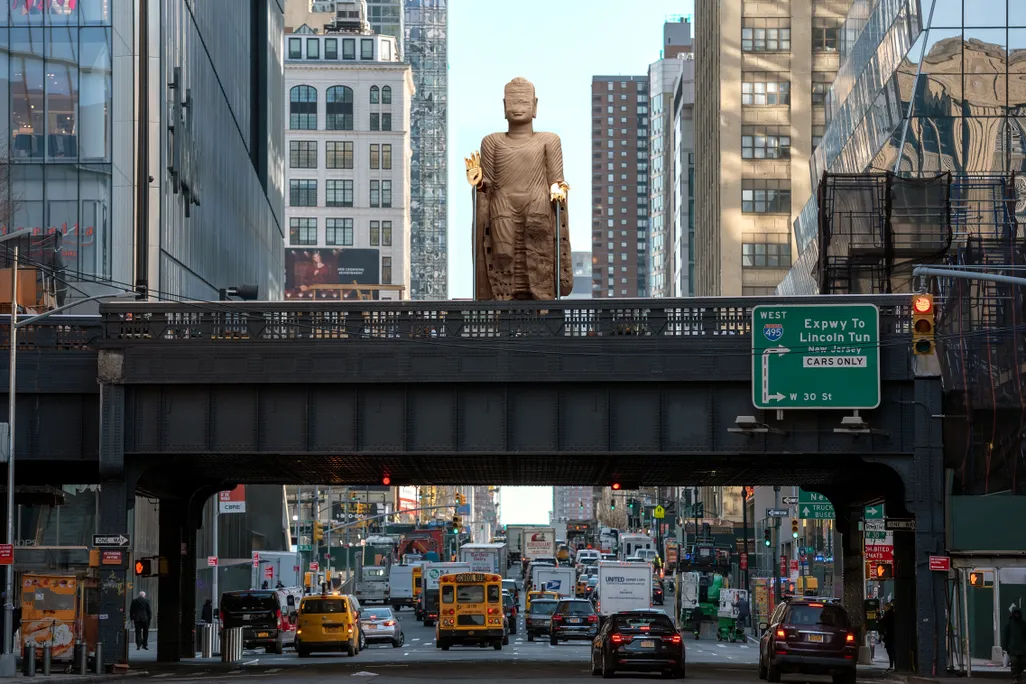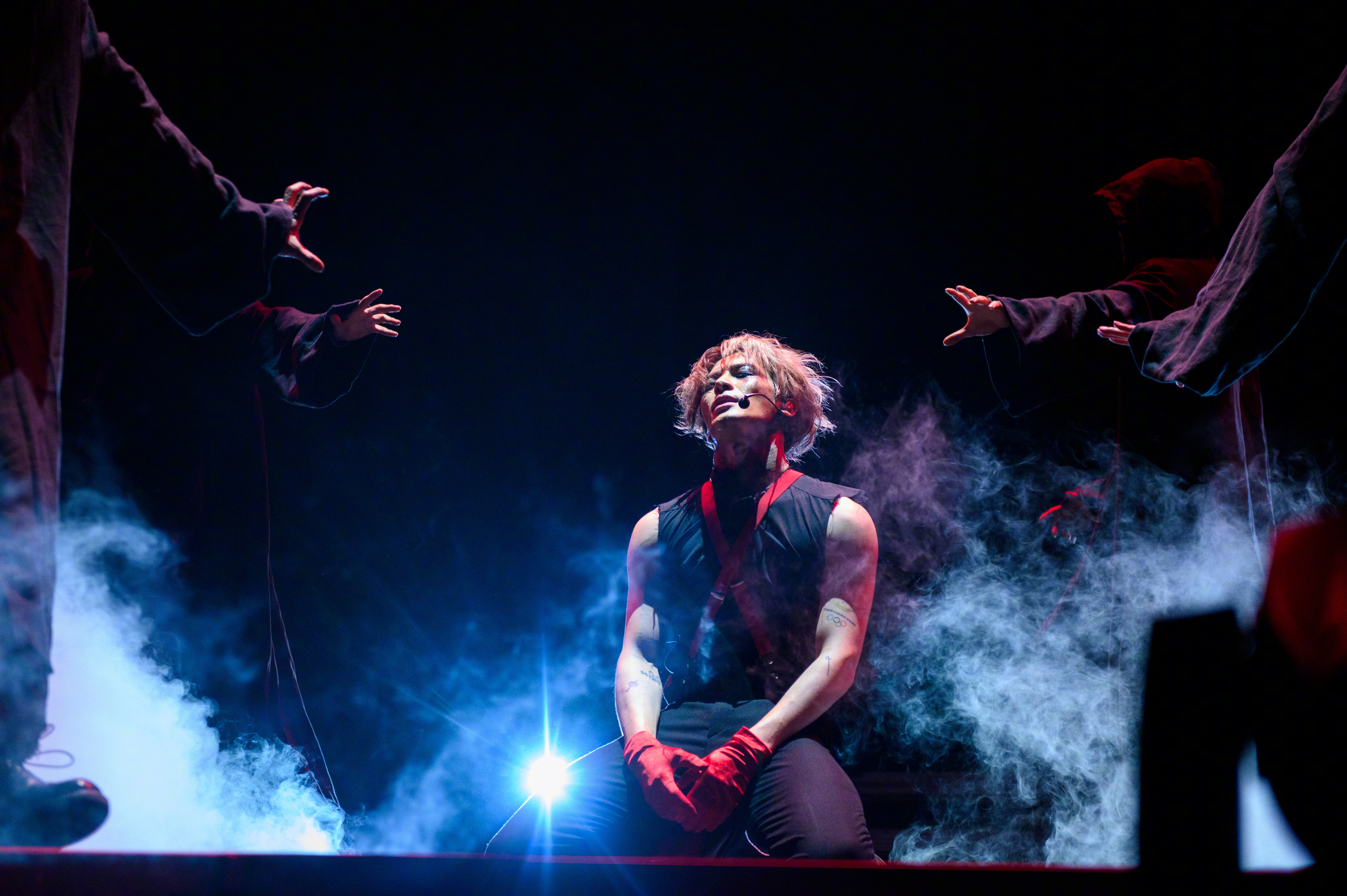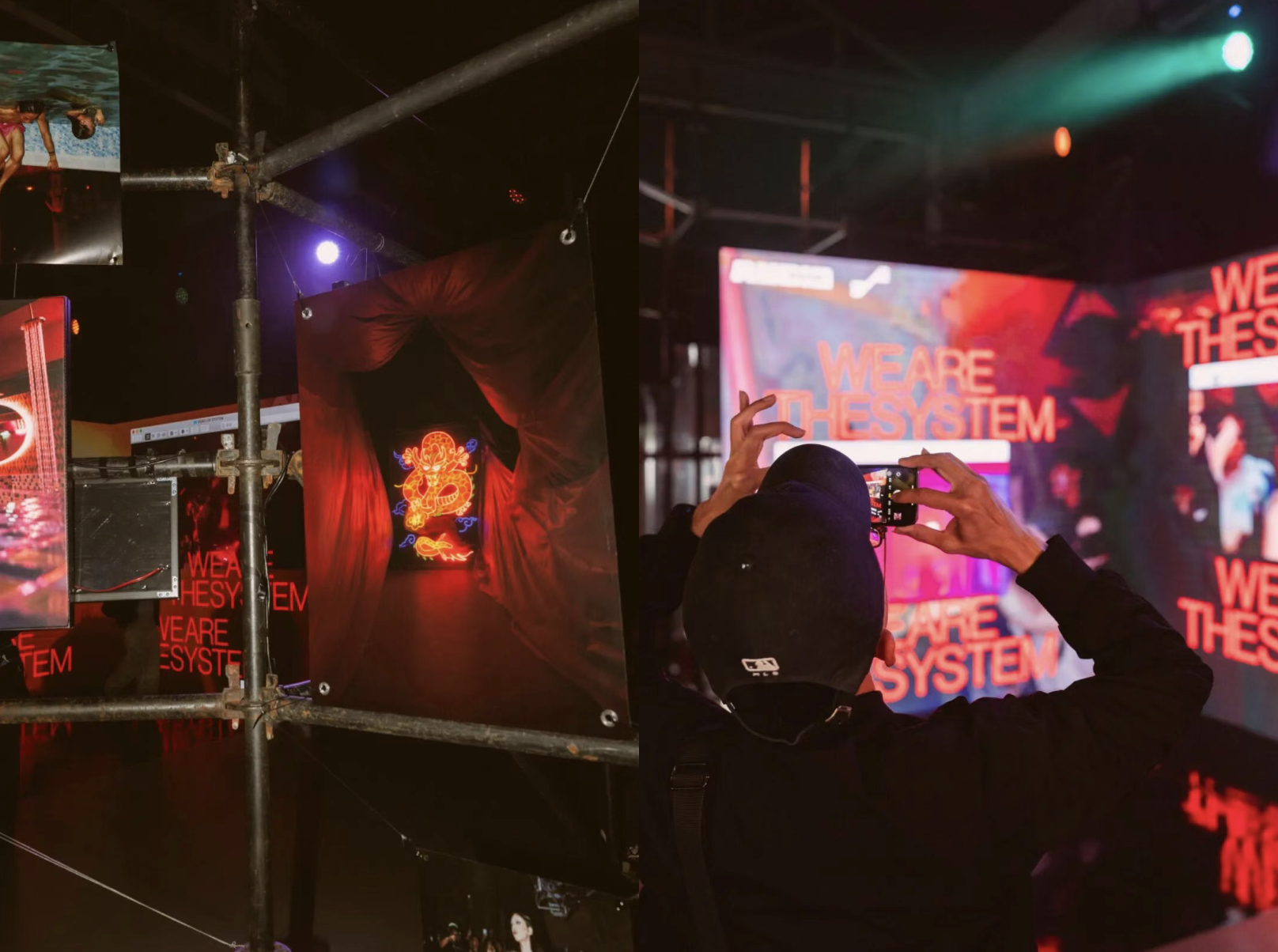The use of video game aesthetics and virtual worlds as a means to expression within modern Chinese music and art is far from being a new phenomenon, but it’s one that continues to grow and gain steam. And Shanghai-based producer Gao Jiafeng (who simply goes by Jiafeng) is taking it to some interesting places with his most recent release: an album of music that comes accompanied by its own tailor-made Dance Dance Revolution-like game (and touch mat).
In some ways, Jiafeng’s project is the natural conclusion of the interest in merging the gaming and arts worlds prominent in China in recent years. Early proponents of this mode of delving into the possibilities of life in virtual worlds include Cao Fei, whose formative work RMB City (2007) made use of the online virtual world Second Life. For Cao, RMB City went on to become a virtual city which held virtual exhibitions for various galleries in the years after it was made.
Similarly, in the past decade, Shanghai-based artist Lu Yang has immersed herself in exploring nostalgic video game designs and, more recently, producing asexual digital humans.
Related:
 Mindful Indulgence: Lu Yang’s Art as Spiritual EntertainmentArticle Nov 04, 2017
Mindful Indulgence: Lu Yang’s Art as Spiritual EntertainmentArticle Nov 04, 2017
In relation to this idea of the rise of online culture, Lu told us, “I’ve played various games since childhood […] I should say it’s a condensation of my worldview in a game. Our current era is very specially high-tech in history, but in any case it is just a tiny bit of dust that occurs in the universe.”
In May, earlier this year, noted artist and designer Kim Laughton, who has created visuals and interiors for Chinese clubs such as ALL in Shanghai and OIL in Shenzhen, also released his own mini-game on Steam, Defective Holiday.
The impulse to explore video game aesthetics and virtual worlds for these artists come from different places. For some, it’s nostalgia, a deep dive into childhood dalliances with futuristic visuals; for others it can come from an internet-era longing for escapism into virtual worlds.
For Jiafeng, his new album Emotional Dance Music sees him incorporate aspects of a beloved game of his youth, Dance Dance Revolution — musically and visually. He basks in the nostalgic qualities of the iconic dance game, throwing himself back into his early teens. It makes for an interesting combination of music that sounds fresh and futuristic, but that also references the Eurodance, bubblegum pop music that was taking Asia (and the world) by storm in the early ’00s.
The release also comes equipped with a dance mat that can be plugged into Windows and Mac computers so that the user can dance along to the 10 tracks on Emotional Dance Music.
It’s unexplored territory for Jiafeng, but hardly unexpected, considering his earlier forays into what he’s termed as “stuff (songs/jokes/videos),” music that incorporated influences from hip hop, vaporwave, underground electronic music and so much more. Or given his “browser DJ sets,” which he’s previously showcased at a RADII china.wav event and on NTS, and consisted of him layering together sound clips from various browser windows on his computer.

The opener on this new album, “Logo,” is a seven-second snippet and fittingly sounds like something that might accompany the title screen of a video game. Remember the sound that played when you turned on your first generation Playstation? That’s the feeling that “Logo” recalls, a time when the future did not feel dystopian, dark and intimidating, but rather dotted with new video game consoles, cool, shiny clothes and bizarrely over-the-top music.
“Everything that I’m doing is imitation, and that’s it. I imitate too many things and it becomes mine,” Jiafeng says, explaining his process. “All the stuff I know where it comes from, I have a clear idea where this beat, that sound, this piece of nostalgia comes from.”
When we meet Jiafeng at his underground studio in Shanghai, he opens our conversation by talking profusely about iconic K-pop singer, Lee Jung-hyun. We sit on a couch in his studio, which is lined with silver wallpaper, and watch one of her performances on YouTube. “All her live performances are sort of like art pieces,” he says. Combining an ancient warrior aesthetic with contemporaneous concepts of the future that were present in the early ’00s, her metallic, Final Fantasy-esque garb has an air of nostalgia about it.
This is a feeling that Jiafeng embraces — “I always use nostalgia, I never think it’s a bad idea,” he says — but it doesn’t mean his music isn’t current. “I do listen to what’s going on right now, that’s why this album doesn’t sound like an old thing,” he adds. “A lot of textures and the ideas are today’s, the lyrics are pretty much how I’m feeling right now.”

The record is typically atypical from Jiafeng. Known for incorporating Taobao-bought lyrics into his songs and for experimenting with virtual performers, for Emotional Dance Music he used an open-source platform called Stepmania to combine the album’s tracks with a step pad.
Speaking about the decision-making behind incorporating the step pads, he says that he was struck by the idea one night in bed. He was about 70% of the way through making the music, and was wondering about what the album cover should be. “I was thinking about DDR all the time, and I was searching for images of DDR online and finally I thought, this is how I can make it.”
He then set about making dance moves for each of the songs, a process he undertook on his own with a few friends. A large portion of the work surrounding the dance mat was, as Jiafeng says, tedious. “It’s a lot of work, definitely not as much as the music itself. It’s not so much creative work, a lot of the time you are dealing with bugs, the pack, the calibration, because you want people to have the best experience.”
Related:
 “Like a Cyborg Mutant”: Multimedia Artist Jiafeng Digests Modern ChinaArticle Jul 12, 2018
“Like a Cyborg Mutant”: Multimedia Artist Jiafeng Digests Modern ChinaArticle Jul 12, 2018
But this combination of music, video game and packaging helped establish the experience that Jiafeng was after. With his music increasingly sounding more poppy, it feels like the producer is aiming to create instant gratification for the listener.
“I feel like my favorite thing is to make things that entertain. Music is one angle that I think I’m good at, but surrounding music, I really like to explore what I’m capable of including in the idea.”

















